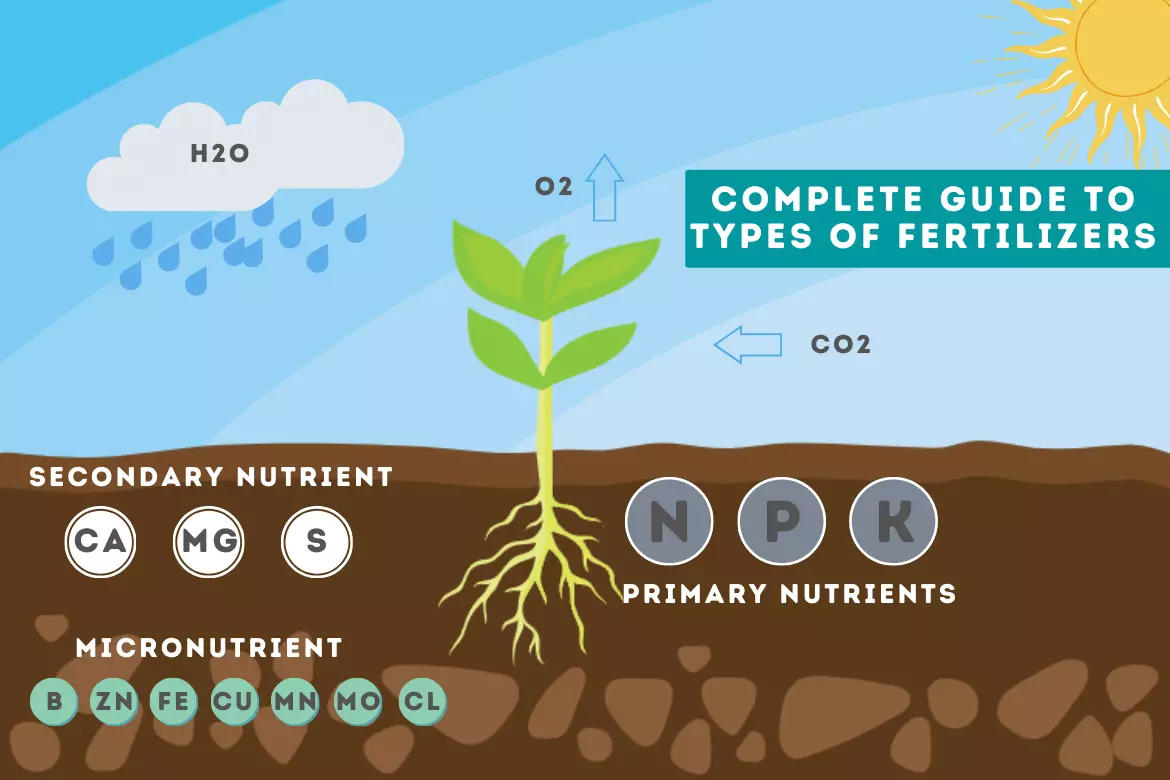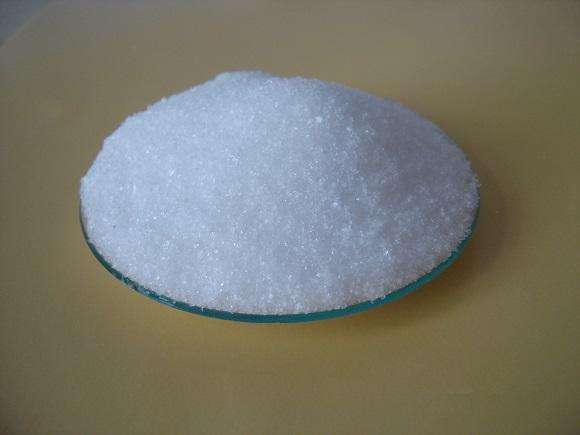Introduction to Organic Magnesium Fertilizer
Organic magnesium fertilizer is derived from basalt, dolomite, magnesite or seawater extracts and processed in a way that makes it easily accessible for the plant’s uptake. This type of fertilizer is very important as magnesium plays a key role in plant nutrition, being a core component of chlorophyll, the molecule that facilitates photosynthesis.
It is important for plant health – magnesium is the core molecule in chlorophyll, which captures sunlight and converts it to chemical energy through photosynthesis – but it is also involved in many other plant functions, from activating enzymes to the manufacture of DNA and RNA. ‘The green colour of a healthy plant comes from chlorophyll, which requires magnesium inside it. Without enough magnesium, it starts to break down this chlorophyll, and the whole plant starts to go yellow, a process called chlorosis,’ explains Helen Torrens, a plant physiologist. ‘This causes massively reduced growth and productivity.’
Using organic magnesium fertilizer is good for crop production, because it helps plants grow strongly, but it is also good for farming practices more broadly, because it does not contribute to the harmful accumulation of synthetic chemicals in the soil, which can degrade soil health over time.
Benefits of Magnesium in Plant Growth
Magnesium is critical to a number of major plant functions that have a direct bearing on growth and yield: magnesium is a vital component of chlorophyll and is therefore indispensable for photosynthesis, the conversion of the Sun’s energy into the chemical energy of sugars.
The principal function of magnesium in plant physiology is to serve as the central atom in the chlorophyll molecule, and without magnesium, there can be no photons from the sun captured and used to support the fundamental process of photosynthesis. Photosynthesis is the engine of life on Earth. It is the process that creates 100 per cent of nutritious food. Healthier and more vigorous growth results when photosynthesis is more efficient, and plants can more effectively synthesise food.
And, apart from its role in chlorophyll, magnesium acts as a catalyst for many plant enzymes, especially those involved in energy metabolism. This includes its role in allowing ATP (a plant’s most important energy currency) to be used with highest efficiency by plant cells, which is critically important for growth, including via the production of metabolites.
Magnesium also boosts the resistance of a plant to stresses in the environment such as drought or frost. ‘Plants that have been supplied with magnesium can better withstand stress, and this often means increased health and longevity’, says Field, who has himself taken 450mg of magnesium a day for the past year. This is because magnesium ensures that the cell membranes are well-anchored and safe from oxidative damage.
However, after the addition of organic fertilizer richin in magnesium, its synergy with other fertilizers in the soil makes it more active by enhancing photosynthesis and stimulating enzymatic reactions, which play key roles in strengthening plants. With all these benefits, the role of magnesium in plants cannot be understated since it plays a crucial part in agricultural productivity.

Application Guidelines for Organic Magnesium Fertilizer
The application of organic magnesium fertilizer must be done right in order to provide the maximum effect to the plant growth and soil health. This depends very much on the type of plant, the kind of soil and the available magnesium levels in the soil.
Different crops need varying amounts of magnesium, which must be tailored for when organic magnesium fertilizer is applied. Leafy vegetables such as spinach and lettuce need a greater amount of magnesium because this element helps in making chlorophyll. Tomatoes and peppers need more magnesium when flowering and setting fruit so this period needs to be targeted for optimum yield.
The timing of application is also important. Mag nesium, when applied pre-plant or at planting time, is more available to the crop and is more readily translocated. It needs to be in place at the beginning of the crop cycle, before the first leaves are formed, so that it will be in the leaves as they expand. Broadcasting the mag nesium before tilling a leafy crop is a typical application situation, or applying it as a side dressing in young growth stages. Following a short period of tissue-ripening, it is sometimes absorbed through the foliage as foliar application.
To determine how much to apply and when to apply it, a soil test should be done before magnesium fertilizer is applied. Soil tests can indicate not only how much magnesium is in the soil already, but just how much fertilizer is needed. The soil scientist Lisa Connelly recommends that: ‘Regular soil testing [should be] carried out at least every two to three years to ensure that nutrient balance remains optimum and magnesium deficiency or toxicity does not occur.
Thus, the application of organic magnesium fertilizer based on these recommendations will enhance plant health by providing the required magnesium at the right time, leading to improved crop performance and sustainable fertile soil health.
Comparison with Synthetic Magnesium Fertilizers
A consideration of the contrasts and similarities between organic magnesium fertilizer compared with synthetic materials can then help to inform the best decision about which to use – if either – for particular agricultural goals. Both supplements can bring value to soil health. They can boost plant growth and yields; but they are fundamentally different in their mechanical and environmental impacts and their interactions with soil ecologies.
In practice, gardeners can bring minerals back into the garden by using organic magnesium fertilizers, found in natural sources such as Epsom salts or dolomite. Unlike rocks, these are readily soluble. Organic magnesium fertilizers are more forgiving of soil microbiomes because, as well as being a source of magnesium, they work to keep soil pH at the optimal level that is needed for nutrient availability and microbial health.
Synthetic magnesium fertilizers used in farming can cause salt accumulation which, over the longer term, adversely affects both soil structure and microbial activity. ‘Organic fertilizers help to build soil structure and health,’ says Harold Greene, emeritus professor of sustainable agriculture at the University of California, Santa Cruz. ‘Synthetics may have an immediate benefit but at a cost to long-term soil vitality.
Since they are less likely to leach into waterways and contaminate waterways, and because their production is likely to have a smaller carbon footprint, organic magnesium fertilizers can be more environmentally friendly than the synthetic varieties. ‘Organic fertilizers have a much lower environmental footprint than do the non-organic ones. They fit the sustainable agricultural mantra much more closely.
In conclusion, synthetic magnesium fertilizers can provide faster and more effective nutrient supply but organic fertilizers have their own advantages like as improve soil health, less organic pollution and also part of the sustainable agriculture. Switching to organic fertilizers can help more sustainable agricultural operation and keep the full chain ecologic cycle.

Case Studies and Research Findings
It can also be helpful to take a look at real-world applications and in-field and in-lab scientific studies to demonstrate the efficacy of organic magnesium fertilizer in assisting plants to grow healthy and thrive in healthy soil. Below are some important case studies and research results which show how the use of organic magnesium can help enhance crop productivity and soil vitality.
Several agricultural studies demonstrate this superiority across multiple crops. One such study, conducted on coffee plantations in Brazil, illustrated how the use of organic magnesium as a fertilizer led to improved yield and quality of the coffee beans. Beyond the increased count of the beans due to the organic magnesium, the beans themselves exhibited superior flavours, owing to the magnesium’s ability to improve nutrient absorption by the coffee plant.
A wealth of research over the years has proven that magnesium plays a key role in fostering healthier, more vital plant growth. For example, in a study published in the Journal of Plant Nutrition, the supplementation of magnesium in naturally magnesium-deficient sandy soils led to increased potato yields, thanks to enhanced photosynthetic efficiency and better carbohydrate synthesis in the root structures and leaves of the plants. ‘Our data show that magnesium is essential for optimal plant metabolic functioning, particularly where there is magnesium deficiency in the soil,’ says Amy Benson, one of the investigators in that study.
These examples and studies highlight the practical applicability and scientific grounds for the use of organic magnesium fertilizers, which not only enhance crop yields but also promote the sustainability of these yields in agriculture, by ensuring a greater nutritional quality of the food produced.
Conclusion and Future Outlook
When we have arriveively discussed the topic of organic magnesium fertilizer, it is to be understood that magnesium is a valuable natural resource in plant development. As a natural element, it helps in boosting the plant physiological process as well as improving the soils fertility. What is more, it shows sustainability in the practice of agriculture. Overall, the use of organic magnesium on plant has great advantages in all agrarian components as well and the preservation of the environment.
The main benefits of organic magnesium fertilizer include better soil structure, better efficiency in plant nutrient-uptake, and a lower environmental impact as compared with synthetic fertilizers. They are known to produce greener, healthier plants through improved photosynthesis and energy metabolism, and can improve or maintain the ecological balance of farm environments through maintaining biodiversity and the vitality of living soil.
In conclusion, it seems that the trend for organic farming and other sustainable resources (for example, organic magnesium fertilizer) to be used is going to increase in the future. Also, as the public begins to understand environmental problems, the demand for sustainable products will increase. Therefore, many farmers and agricultural companies are likely to move to the organic side. Besides, scientists will probably do research on what are more efficient and effective organic fertilizers and will develop new formulas and methods of application to ensure that plants are healthier and produce more yield.
The emerging paradigm of sustainable agriculture supported by green magnesium fertilizers is not only destined to increase agricultural productivity and sustainability but also to develop the entire world by solving the global issues of climate change and food security.
Here are some scholarly references on organic magnesium fertilizers:
- Magnesium Fertilizer Application and Soil Warming – Research conducted on tomatoes in greenhouses showed that the application of magnesium fertilizers, particularly through soil and foliar methods, significantly increases tomato yield by improving magnesium uptake. This study highlights the effectiveness of magnesium in enhancing crop yields under controlled environmental conditions (Agronomy, 2022).
- Characterization of Different Magnesium Fertilizers – This paper evaluates various magnesium fertilizers and their effects on the yield and quality of soybean and pomelo. It provides insights into how different forms of magnesium fertilizers, such as fast-release and slow-release, affect plant growth and soil health, offering guidance on selecting the most efficient type of magnesium fertilizer for acidic soils (Agronomy, 2022).
- Magnesium Fertilizer to Improve Nutrient Uptake in Rice – A study in Liaoning Province investigated the impact of magnesium fertilizer applied via soil and foliar methods on rice yield and quality. The results showed significant increases in yield and improvements in nutrient content within the rice plants, emphasizing the role of magnesium in enhancing crop production (Agronomy, 2024).







